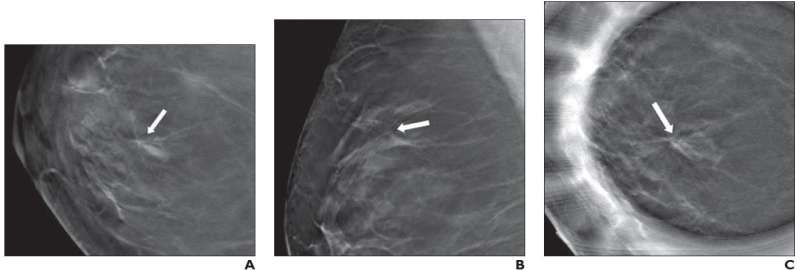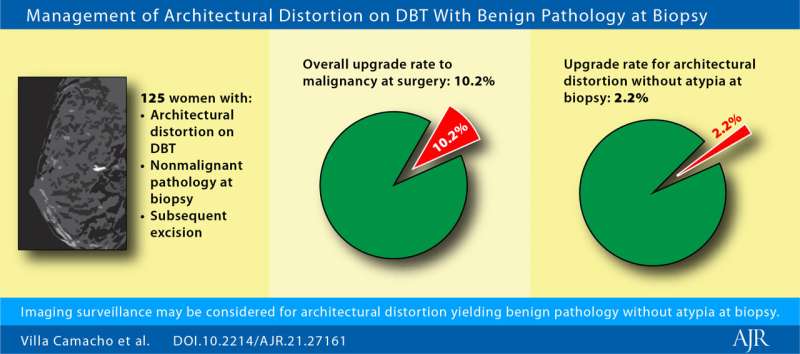Architectural distortion on digital breast tomosynthesis with nonmalignant pathology

According to an article in ARRS' American Journal of Roentgenology (AJR), imaging surveillance is a management alternative for architectural distortion on digital breast tomosynthesis (DBT) yielding radial scar without atypia and other concordant benign pathologies without atypia at biopsy.
"To our knowledge," coauthors Juan Villa Camacho and Manisha Bahl of Massachusetts General Hospital in Boston contended, "this investigation represents the largest study of nonmalignant architectural distortion on DBT."
Defining architectural distortion as parenchymal distortion with no visible mass, Camacho and Bahl's retrospective study included cases of mammographically detected architectural distortion from July 1, 2016 to June 30, 2019 that were nonmalignant at image-guided needle biopsy and underwent surgical excision. Mammographic examinations included both digital 2D mammography and DBT. With imaging data extracted from radiology reports, upgrade rates were summarized using descriptive statistics.
The overall upgrade rate of architectural distortion on DBT with concordant nonmalignant pathology results at biopsy to malignancy at surgery was 10.2% (13/128). The upgrade rate to malignancy of architectural distortion without atypia at biopsy was 2.2% (2/89) and of architectural distortion with atypia was 28.2% (11/39).

Noting that, historically, surgery has been recommended for all cases of architectural distortion, including cases that are nonmalignant at biopsy, "our results suggest that imaging surveillance rather than surgery may be considered for radial scars without atypia and other benign concordant pathologies without atypia," the pair concluded.
More information: Juan Villa Camacho et al, Management of Architectural Distortion on Digital Breast Tomosynthesis With Nonmalignant Pathology at Biopsy, American Journal of Roentgenology (2022). DOI: 10.2214/AJR.21.27161
















